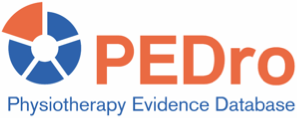Eight articles were included in this systematic review (n=180 participants). Six studies were randomised controlled trials and 2 studies were single group intervention studies. Participants’ ages ranged from 32 to 54 years. The studies included both supervised and unsupervised exercise programs in people with obstructive sleep apnea. Treatment programs included a variety of exercise, including aerobic exercise (walking or running), stair climbing, exercise bike, resistance training, and oropharyngeal exercises. Treatment duration ranged from 2 to 6 months, and treatment frequency from 2 to 7 days/week with sessions ranging from 30 to 150 minutes. Control groups included minimal or no intervention. Clinical outcomes were severity of sleep apnea (Apnea Hypopnea Index), body mass index, and patient’s sleepiness (Epworth Sleepiness Scale). Risk of bias for the included studies was measured using the Jadad scale and scores ranged from 1 to 4 (out of 5). Exercise reduced the Apnea Hypopnea Index (standardised mean difference 0.54, 95% confidence interval 0.21 to 0.87, 7 studies) and total Epworth Sleepiness Scale score (standardised mean difference 1.25, 95% confidence interval 0.10 to 2.40, 4 studies) compared to control. There was no statistically significant effect on body mass index (standardised mean difference -0.05, 95% confidence interval -0.04 to 0.28, 4 studies). Exercise therapy was effective for improving clinical outcomes (severity of sleep apnea and patient’s sleepiness) in the treatment of obstructive sleep apnea. The main limitation of this review is the small number of studies and participants included.
Aiello KD, Caughey WG, Nelluri B, Sharma A, Mookadam A, Mookadam M. Effect of exercise training on sleep apnea: a systematic review and meta-analysis. Respir Med 2016;116:85-92.



